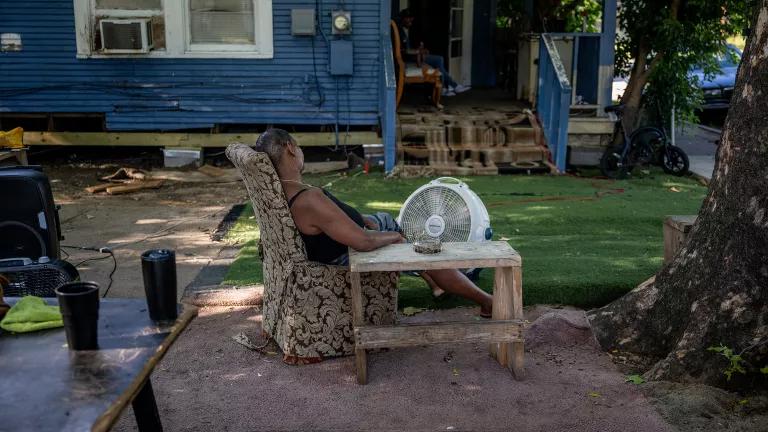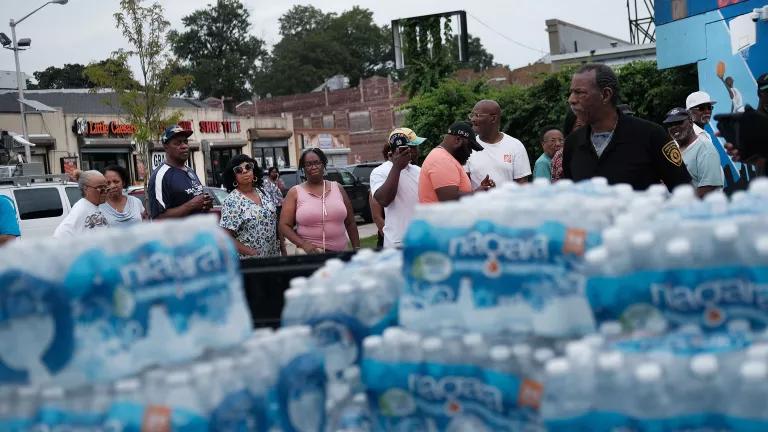The Potential Eviction Crisis Could Create a Debt Time Bomb
If Congress doesn’t urgently act, U.S. households that are most vulnerable to the health and economic impacts of the COVID-19 pandemic face the increasing threat of evictions at the worst possible time—and America risks a consumer debt time bomb.

If Congress doesn’t urgently act, U.S. households that are most vulnerable to the health and economic impacts of the COVID-19 pandemic face the increasing threat of evictions at the worst possible time—and America risks a consumer debt time bomb.
UPDATE: On September 1, 2020, the Centers for Disease Control and Prevention (CDC) announced it would push forward with a moratorium on evictions across the nation to prevent exacerbating the spread of COVID-19. While some governors had extended existing moratoria prior to this action from the CDC, there was no national policy holding back evictions (since the last one expired on July 25) while infections continued to vex huge swaths of the country. In the coming weeks, 30 million to 40 million people will be at risk of being evicted at a time when some students are returning to classes and people across the nation are gathering to vote. It is likely that the CDC's authority to issue this moratorium will be challenged, but it is an important policy that partially addresses significant public health and equity concerns at a key moment—far better late, than never. This ban does not provide the financial support to renters and building owners that is needed. Nor does it address the long-term ramifications of late fees and back rent to debt burdens and credit scores. Congress is now considering another round of stimulus funding that will hopefully include bolstering this moratorium to address those financial concerns that are necessary to providing long-term security to renters and owners.
We are now just over three weeks away from the expiration of the federal eviction ban passed by the Congress under the CARES Act in March. If Congress doesn’t urgently act to extend the moratorium, U.S. households that are most vulnerable to the health and economic impacts of the COVID-19 pandemic face the increasing threat of evictions at the worst possible time—and America risks a consumer debt time bomb. Black and Latinx families are already being the hit the hardest by coronavirus infections, and are also more likely to face the threat of eviction over the coming months unless more action is taken.
Although the federal moratorium expiring July 25th only covered rental units and mortgages backed by Department of Housing and Urban Development financing, it provided the template for many state and local moratoriums covering a wider universe of housing. Many of those local moratoriums are expiring as well, exposing more people to evictions at a time when most need stable shelter to weather the pandemic. In many cases, the local moratoria, only prevented the execution of evictions, but landlords are still able to file cases pending court reopening and post eviction notices on doors essentially vocalizing threats against current tenants.
African-Americans and people of color are more likely to be impacted by the coming eviction wave, as a recent study in Boston found. And this only accounts for legal evictions, excluding many “illegal actions that landlords use to threaten, lock out, or otherwise displace tenants.” Additionally, a recent analysis by the COVID-19 Eviction Defense Project, found that of the 110 million U.S. residents living in rental housing, about 20 percent are at risk of eviction by Sept. 30 with African-American and Latinx renters expected to be hardest hit.
But the coronavirus is not done with us. Some states such as California that avoided the early spike in cases are now seeing infections rise, while others that relaxed public gathering restrictions too soon are also seeing infection rates jump tremendously.
The idea of “relaxing too early” sums up perfectly the challenge before us, which is why we urgently need Congress to act to ensure people are able to stay safely in their homes. Congress must act to provide support for renters and ensure that an eviction disaster does not consume the nation’s most vulnerable populations.
The Emergency Housing Protections and Relief Act of 2020 recently passed by the U.S. House of Representatives is one piece of legislation that can help. It contains critically needed housing resources and protections that also were included in the recently House-passed HEROES Act, namely:
- $100 billion in emergency rental assistance;
- Extend for 12 months, a national, uniform moratorium on evictions and foreclosures;
- $11.5 billion to prevent and respond to COVID-19 outbreaks among people experiencing homelessness; and
- Additional resources needed to ensure housing stability for those most in need.
The Senate needs to act quickly to enable these critical rental assistance resources to reach those in need or we could face an economic disaster. But we still need much more. By some estimates, to truly cover the cost of keeping renters in their homes during the COVID-19 pandemic, the nation will need to spend as much as $15 billion per month.
That’s due to rising housing costs, stagnating wages, and energy burdens. In 2019, nearly half of all renters spent more than 30 percent of their income on housing costs, and approximately a quarter paid more than half of their earnings on housing.
Compounding this, renters are more likely to be employed in industries vulnerable to employment shocks. The Urban Institute conducted an analysis of workers in the four sectors most affected by the COVID-19 pandemic and found that food and accommodation, entertainment, retail, and transportation combined represent approximately 26 percent of the labor force. Twenty-three percent of all homeowners are employed in these four sectors along with 31 percent of all renters. Service workers, which represent 18 percent of the labor force, are likely to be the most affected category. Fifteen percent of the nation’s homeowners and 23 percent of renters work in that category. Overall, renters are much more likely to work in the more vulnerable sectors of the economy. The COVID-19 crisis increases both the severity of rent burden and the urgency for assistance as jobs are lost due to closings or because these essential service workers (or their families) are becoming directly impacted by the pandemic.
Eviction Moratoria Hide a Potential Household Debt Bomb
Eviction moratoria are needed to protect renters from the lingering threat of losing their homes during the pandemic. However, an eviction moratorium that allows renters to temporarily stop paying rent only shifts the payments to a later time and places the short-term financial burden on property owners who have their own mortgage and lending burdens that often remain due.
Renters have far fewer assets or savings than property owners to get through a shock, crisis, or other disruption in their income stream and need immediate relief on their monthly payments. While a deferral on a mortgage payment can be spread out over the life of a 30-year mortgage, a renter who is living under a lease (if they even have a lease) will see the deferred payments added to the sum remaining under the lease, drastically increasing the monthly payments over a shorter period of time or the remainder of the lease. And this still assumes that the renter is able to return to work or find another job in the middle of the continuing pandemic, in order to make it possible to pay any amount of rent.
If the renter continues to be unable to pay—and is without the protection of a moratorium on evictions and support for making rental payments—the renter can then be evicted and the outstanding balance of rent is turned over to a debt collection agency, critically damaging the tenant’s credit rating.
And that’s not all. Property managers in many cities create a “blacklist” of tenants who’ve gone through eviction proceedings at tenant-landlord courts so that they are flagged anytime they apply for rental housing at another location, threatening these tenants with long-term homelessness or having to rely on lower-standard or costlier housing options.
Add it all up and renters could get crushed by a massive new debt burden. And increasing the debt burden on low- and middle-wage workers weighs down the larger economy. We’re already experiencing a recession deeper than the great recession of 2008. Couple this with the fact that aggregate household debt is at a new high of over $14 trillion. This while the decrease in employment in the first three months of the COVID-19 recession is more than double the decrease the 2008 recession caused over two years. The 2008 recession was in no small part caused by the uneven distribution of considerable household debt. The costs and consequences of the current recession will be much more severe if we allow renter debt to simply accumulate without relief at-scale. We can’t allow renters, and the whole economy, to fall into such a deep hole.
Support Real Resources for the Nation’s Renters
Helping the nation’s renters is not just a moral thing to do, it is in all of our best interests to recover from this crash as quickly as possible. We must eliminate the burdens of rent for people unable to pay, and provide long-term stability to enable a return to work and livelihoods.
The rapid spread of the COVID-19 pandemic shows us clearly how much we’re all connected. The social inequalities that leave too many vulnerable have proven to place Black and Latinx families at greater risk than others. However, the impact of that increased vulnerability will not be isolated to those families. That’s why Congress must act to provide the resources needed to support renters now. The elements of the Emergency Housing Protections and Relief Act are a big step in the right direction, with its $100 billion in support for rent as well as a uniform moratorium on all housing evictions. And it must be coupled with a move to ensure full rent relief, including emergency rental assistance and debt forgiveness to avoid placing the burdens of back payments on vulnerable renters so we’re not saddled with long-term debt and diminished future prospects for our society.



